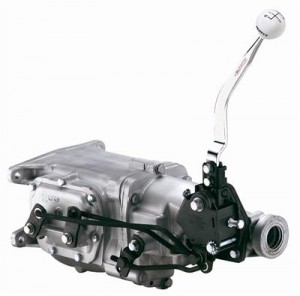I just finished replacing the clutch in my ’72 Nova and put the Hurst shifter back on my Muncie four-speed but when I drove the car, something is definitely wrong. When I shift from Second to Third, the rpm drops way down – much more than it should. But then when I shift from Third to Fourth, the rpm gets higher rather than lower. It’s like the two gears have switched places! What did I do wrong?
J.B.
Jeff Smith: The good news, J.B., is that the fix is really easy. If you look at the side of the transmission where the shifter arms are located, the most forward lever on the transmission side cover is for Third and Fourth gears while the second lever back is for First and Second gears. The third lever–back on the tail shaft–is for Reverse. Many enthusiasts assume that the front lever is for First and Second, but it isn’t.

Once you re-orient the levers, take the time to set the arm lengths so that the shifter will operate smoothly. Most enthusiasts don’t take the time to do this, but it makes a huge difference in how the shifter operates. Hurst used to supply a hardened steel pin that is placed in a small groove cut in the side of the shifter just above the levers on the shifter body. Kits sold in the last 20 years now come with a plastic pin, which will work okay but I like the steel pin. If you don’t have one, the pin’s diameter measures 0.245 and you can use anything close (like an Allen wrench) to lock the shifter in Neutral. With the transmission in neutral, remove each retaining clip from the shifter arm one at a time. Be careful when removing the clips – they like to fly off into parts unknown never to be found again. Remove the rod out of the arm and then carefully to slide the pin back in the lever. If the round pin is not perfectly centered in the lever hole, adjust the length of the shift rod–there are threads at the shifter end of the rod that will allow you to adjust its length. Adjust the rod until the hole fits perfectly into the lever arm hole. Do this for all three levers: 3-4, 1-2, and Reverse.
A final adjustment involves the shift stops that are located on the lower front and back of main part of the shifter body. Once you have the arms adjusted properly, remove the Neutral pin and push the shifter into Third gear and hold it there with a slight amount of forward pressure. With a 9/16-inch wrench, loosen the lower shift stop lock nut and back the bolt out until there is no internal contact roughly ½-turn. Now tighten the bolt until it contacts the lever inside the shifter and tighten the bolt 3/4- to one full turn. Hurst recommends a full turn. The stop prevents the shifter from travelling too far and damaging the transmission. Perform the same process for the Fourth gear stop that is located in the front of the shifter body. These stops work for all four forward gears.
If the shifter has lots of miles on it, you might want to consider a Hurst Pit Pak–this kit contains new nylon bushings and spring clips. There is a kit with steel bushings, but these tend to rattle a bit compared to the nylon bushings, so get the nylon versions. We’ve also used a 0.030-inch thick AN washer underneath the clip to put more pressure on the pin to hold it in place so it doesn’t rattle. This really works, but only if you take the time to adjust the shifter as precisely as possible. Perform these couple of little tricks and you’ll be surprised at how nicely your shifter works!

Jeff,
I have a 63 4sp Dagenham in my 60 falcon which has a 66 I6 200. Transmission is in good shape except for the shifter. I have two options 1)rebuild Dagenham shifter and linkage 2)install a 85 Mustang 5sp from a 4 banner.
Suggestions please